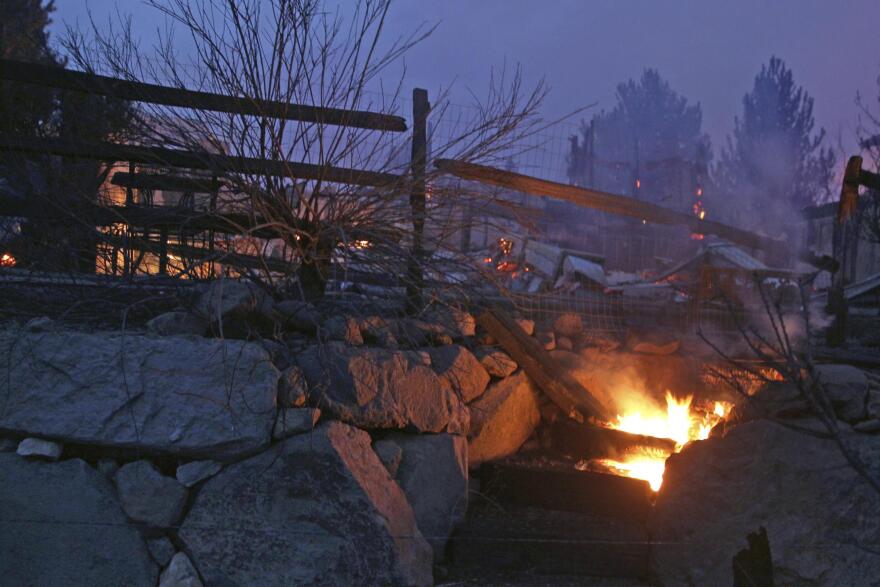RENO, Nev. (AP) — Nevada’s largest utility plans to inspect power lines near a Reno neighborhood where a 2020 wildfire destroyed five homes and damaged two dozen others, a blaze that investigators blamed on arching power lines in gale force winds along the Sierra’s eastern front.
The inspection of NV Energy’s distribution line will be conducted later this month in response to a request from litigants in an ongoing lawsuit over damages resulting from the Pinehaven fire, company spokeswoman Jennifer Schuricht said Friday.
The Reno Gazette Journal first reported NV Energy’s plans.
Schuricht said in an email to The Associated Press the line will return to service after the inspection is complete. She didn’t provide any other details.
She said the company still believes the November 2020 brush fire that burned more than 500 acres (200 hectares) most likely was sparked by a campfire that escaped in the nearby foothills of the Sierra.
A status conference is scheduled March 9 in a consolidated case combining four lawsuits in Washoe District Court that more than a dozen insurance companies have filed against NV Energy since state and Reno fire officials completed their investigation of the Pinehaven fire January 2021.
No one was killed or seriously injured. But more than 1,200 homes were evacuated in the Caughlin Ranch area, where power lines also were blamed for causing a wildfire in 2011.
Reno Fire Marshal Tray Palmer said they investigated but ruled out the likelihood the Pinehaven fire was caused by a campfire, target shooters, motorcycles or ATVs. He said they didn’t find any evidence of negligence on the part of the utility or signs of maintenance issues with the power lines that were blowing in winds up to nearly 80 mph (128 kph).
NV Energy, a subsidiary of Berkshire Hathaway Energy, serves more than a million customers across Nevada. It first announced in June 2019 it would begin following the lead of California utilities that pre-emptively cut off electricity in high-risk areas as storms move in and wildfire danger becomes extreme.
As part of a broader natural disaster protection plan, NV Energy has inspected more than 48,000 power poles in high-risk areas and made any necessary repairs, Schuricht said Friday.
It also has stepped up efforts to reduce wildfire risk through partnerships with state and local agencies “to remove brush, grass and other vegetation from under our power lines and other equipment,” she said.
And it continues to evaluate ways to “make our system more resilient,” including “replacing wooden poles with iron and steel poles in some locations and undergrounding some of our highest risk circuits,” she said.
In neighboring California, Pacific Gas & Electric has been blamed for more than 30 wildfires since 2017 that wiped out more than 23,000 homes and businesses and killed more than 100 people. It has reached settlements with wildfire victims of more than $25.5 billion.
Earlier this year, California regulators linked PG&E to the massive Dixie Fire in the Sierra Nevada last summer when a tree is believed to have hit the utility’s distribution lines in a sprawling, often rugged service territory covering 16 million Northern Californian customers.
That fire burned nearly 1 million acres (3,900 square kilometers) in Butte, Plumas, Lassen, Shasta, and Tehama counties.
PG&E announced plans in July to bury about 10,000 miles (16,100 kilometers) of its distribution and transmission lines over the next decade at a cost of $15 billion to $30 billion. In the few areas where PG&E has already been burying power lines, it has completed about 70 miles (123 kilometers) annually.







